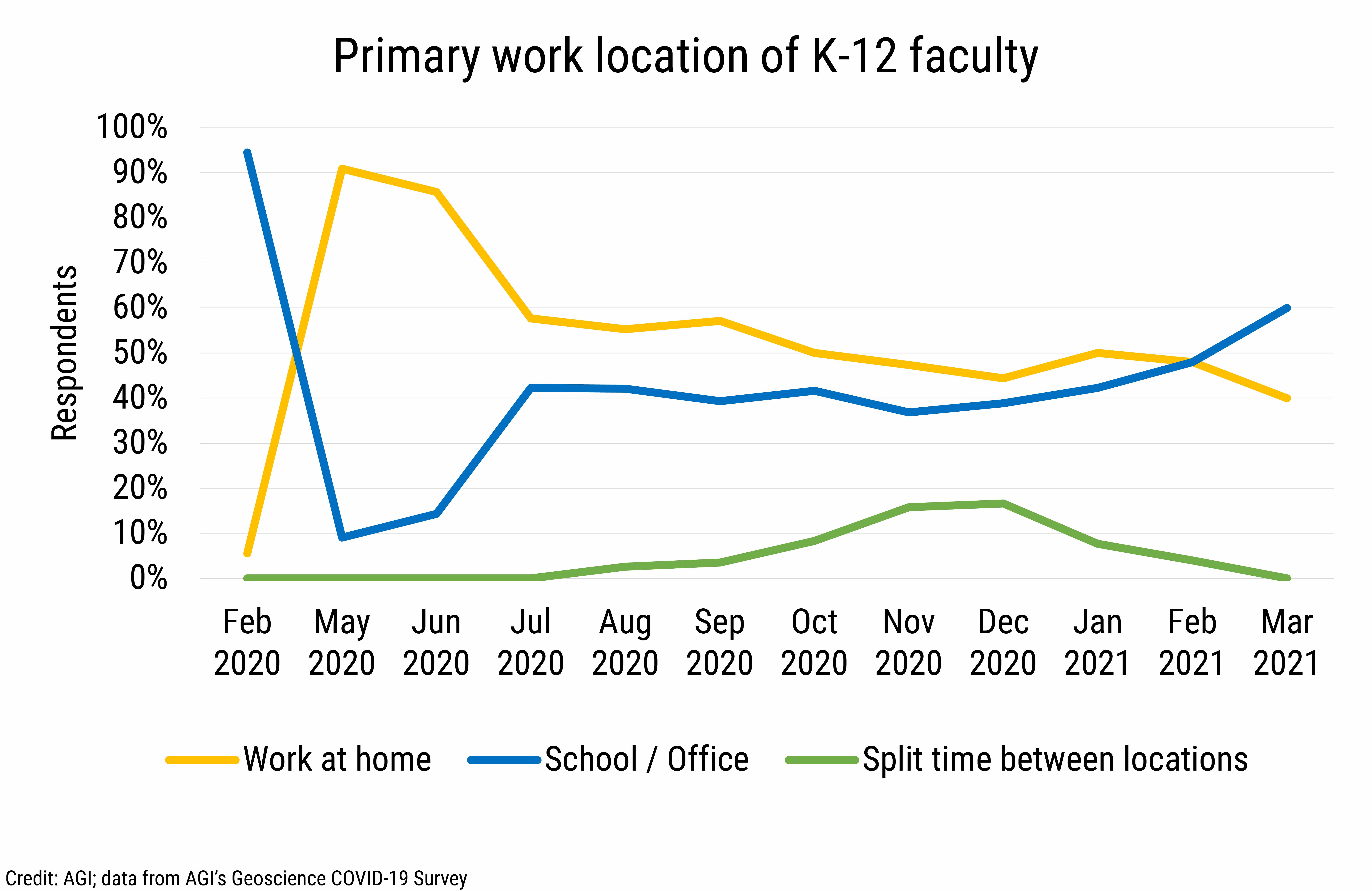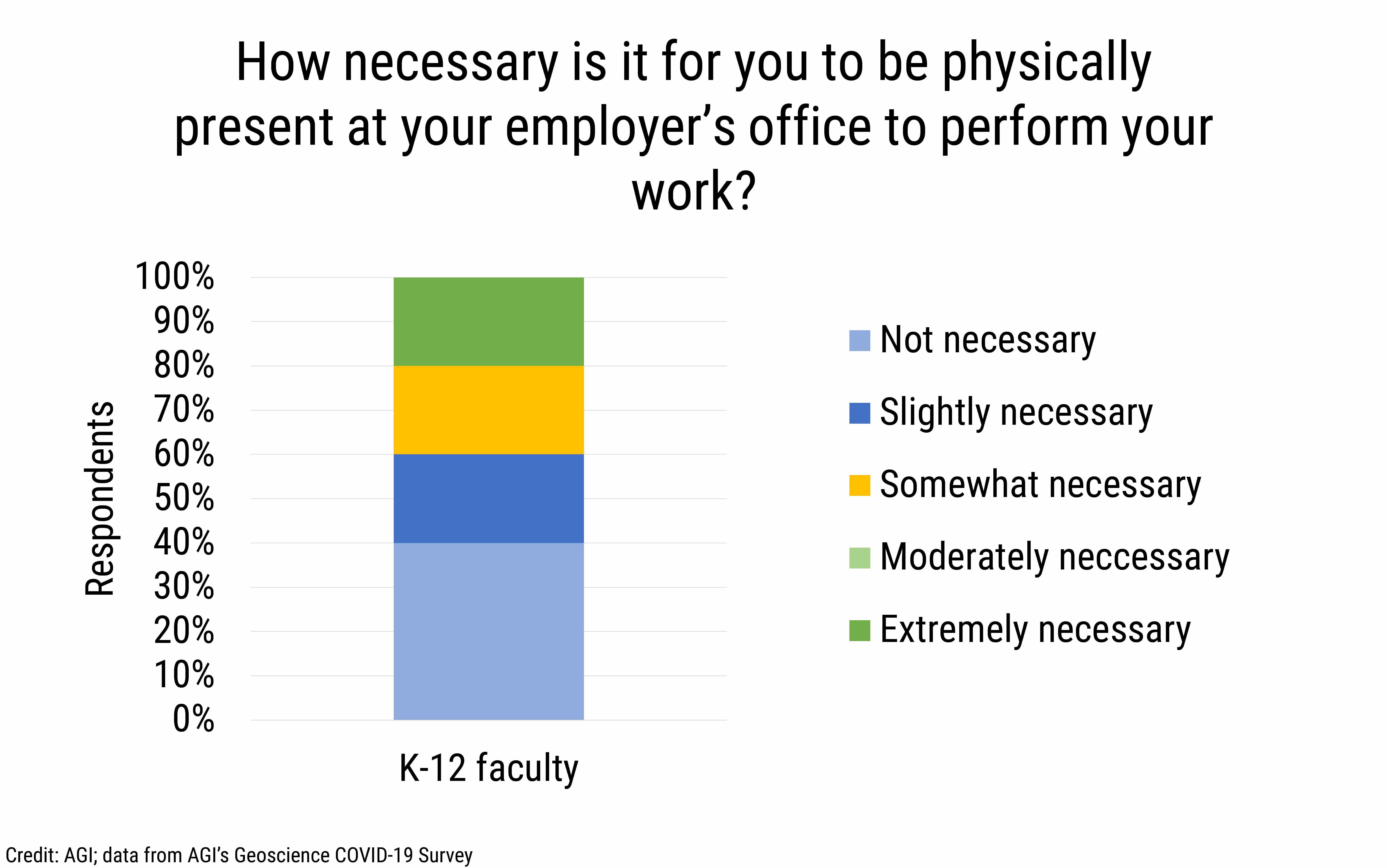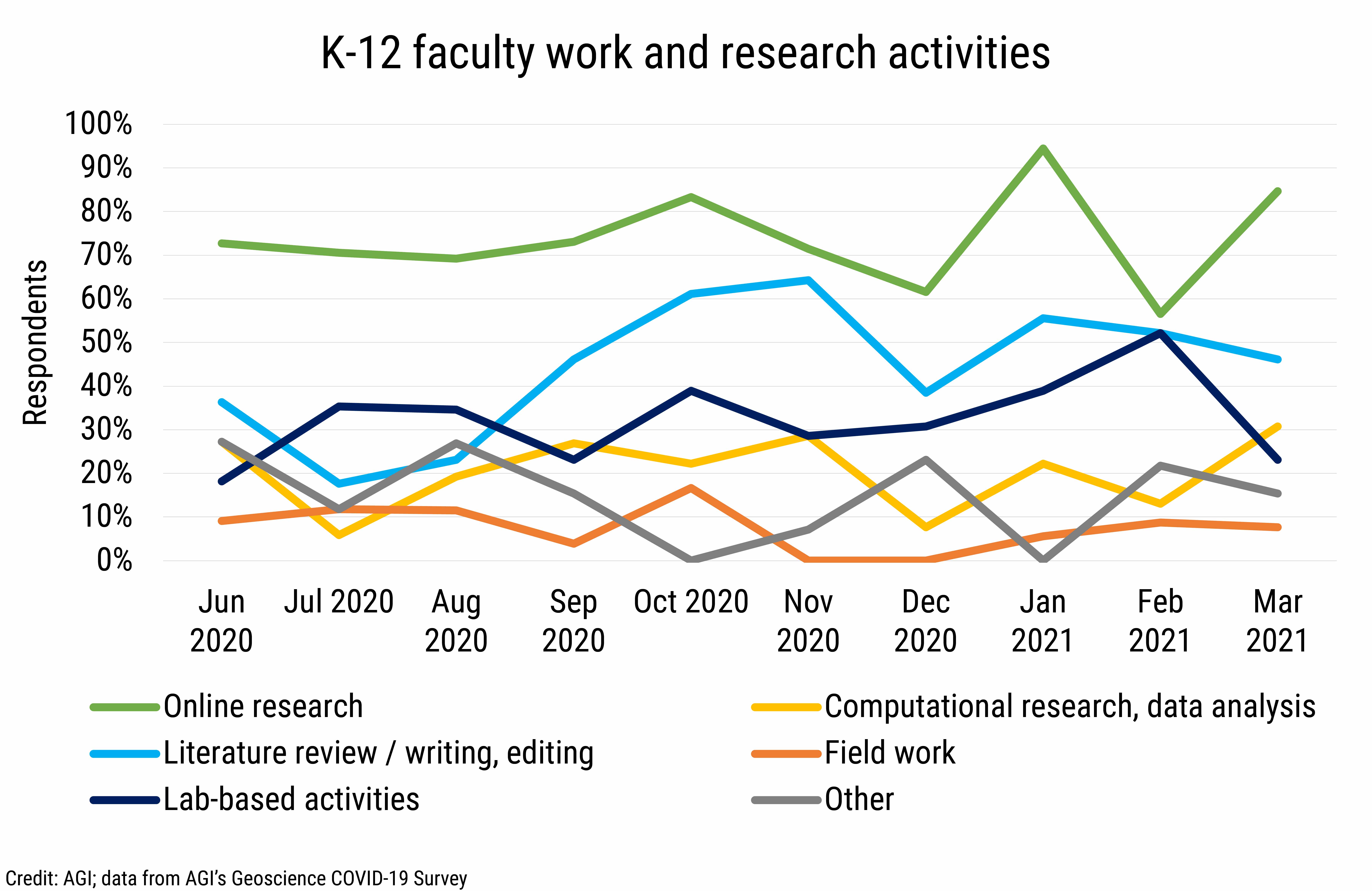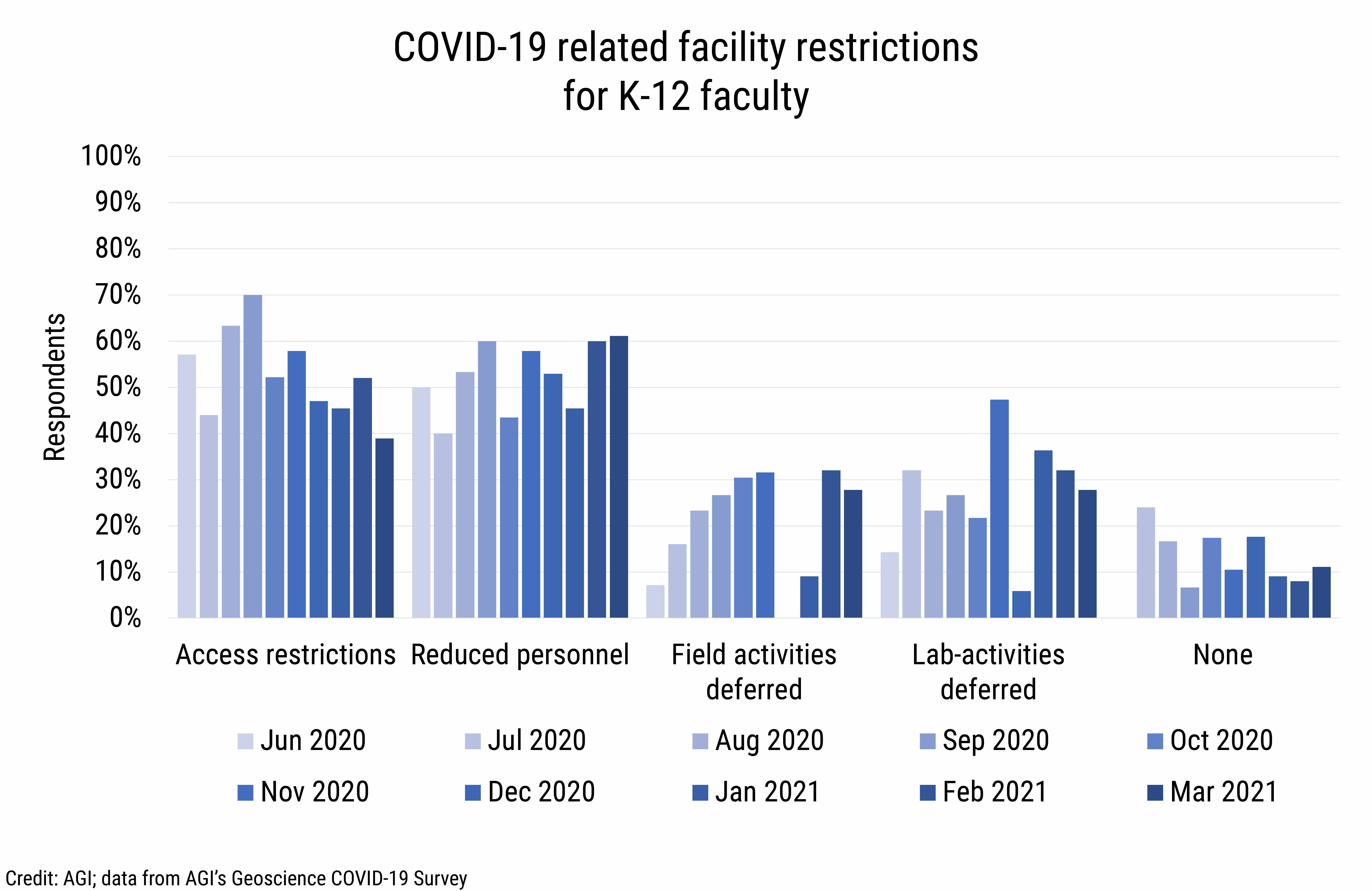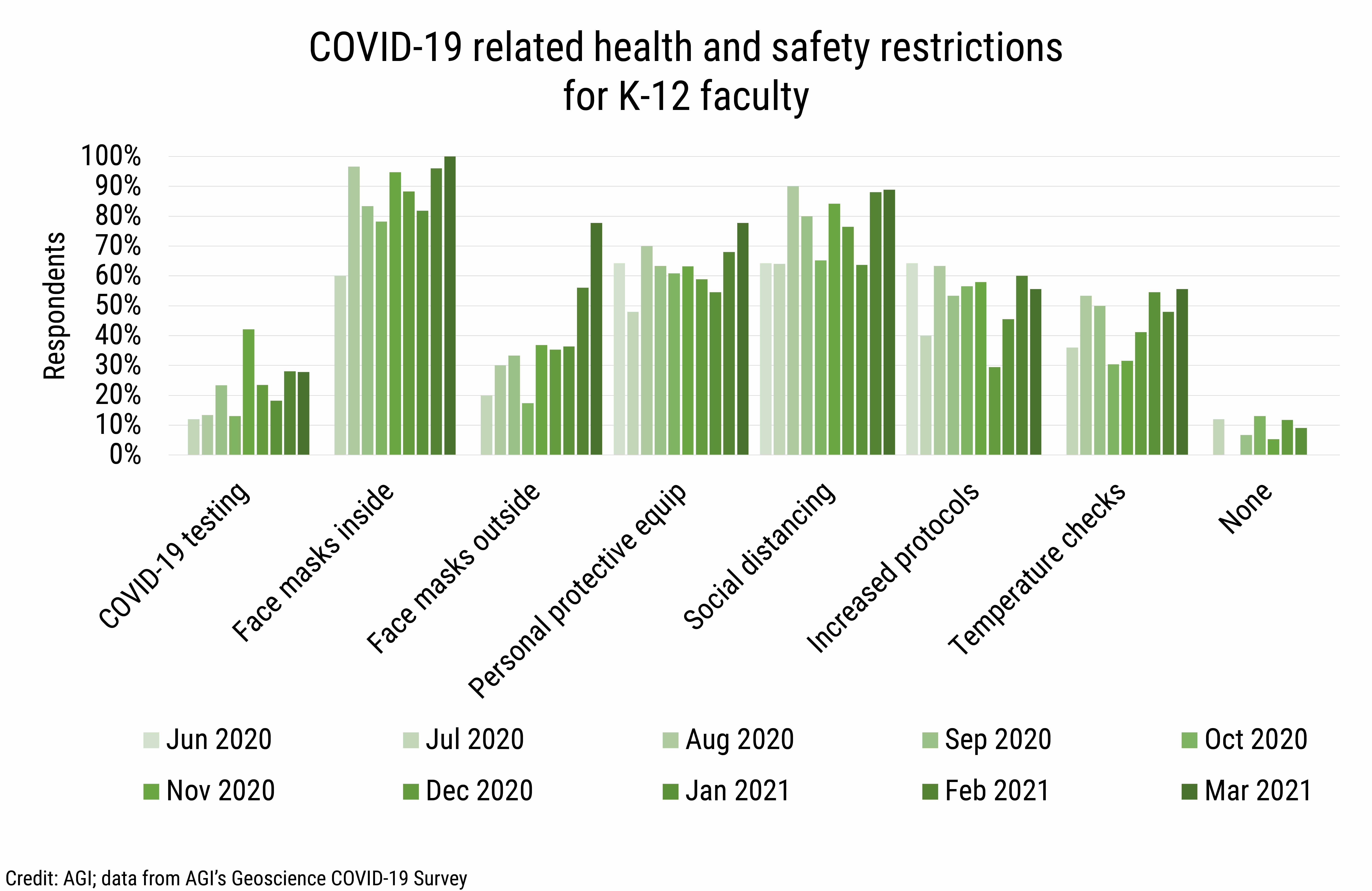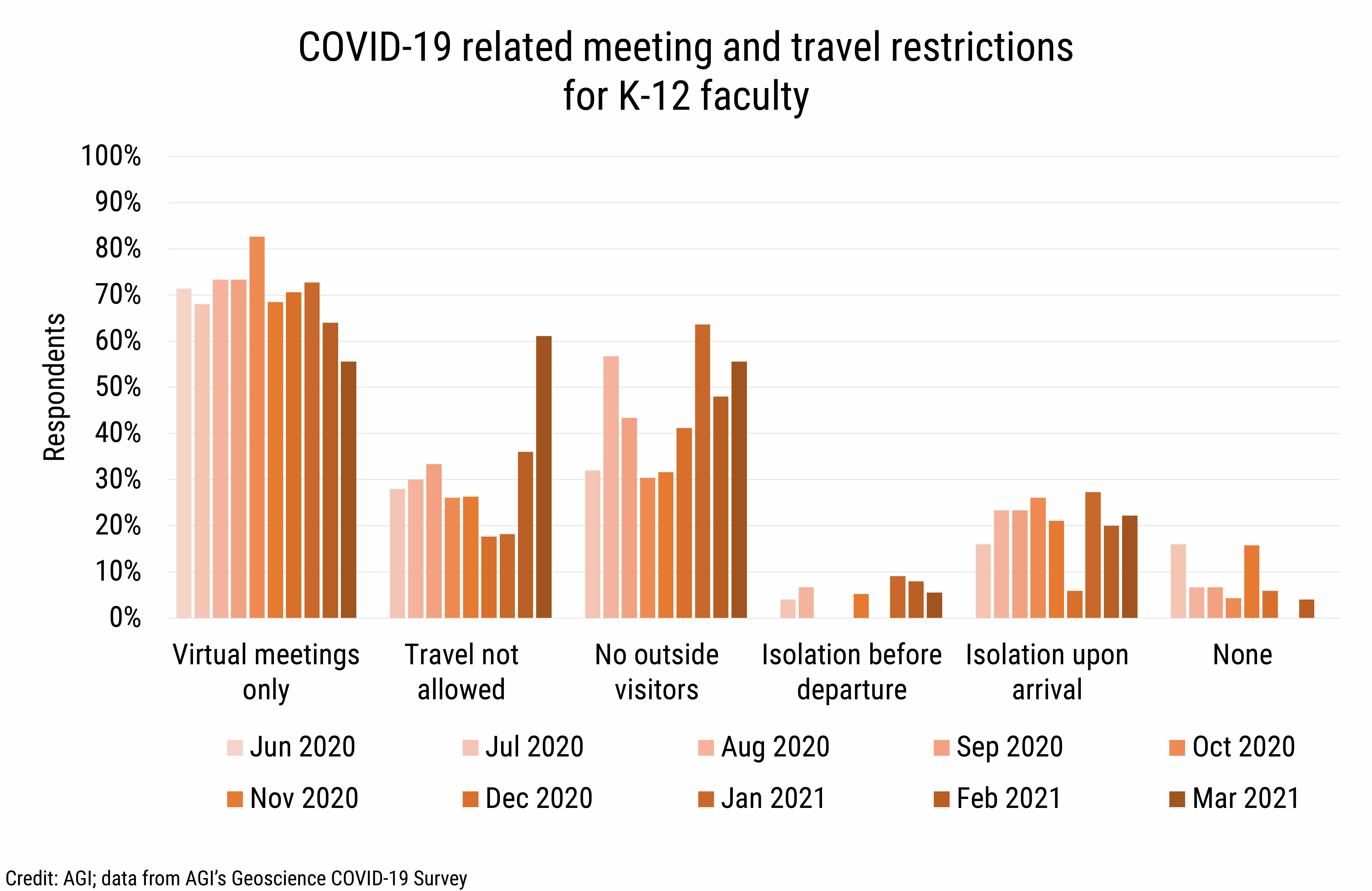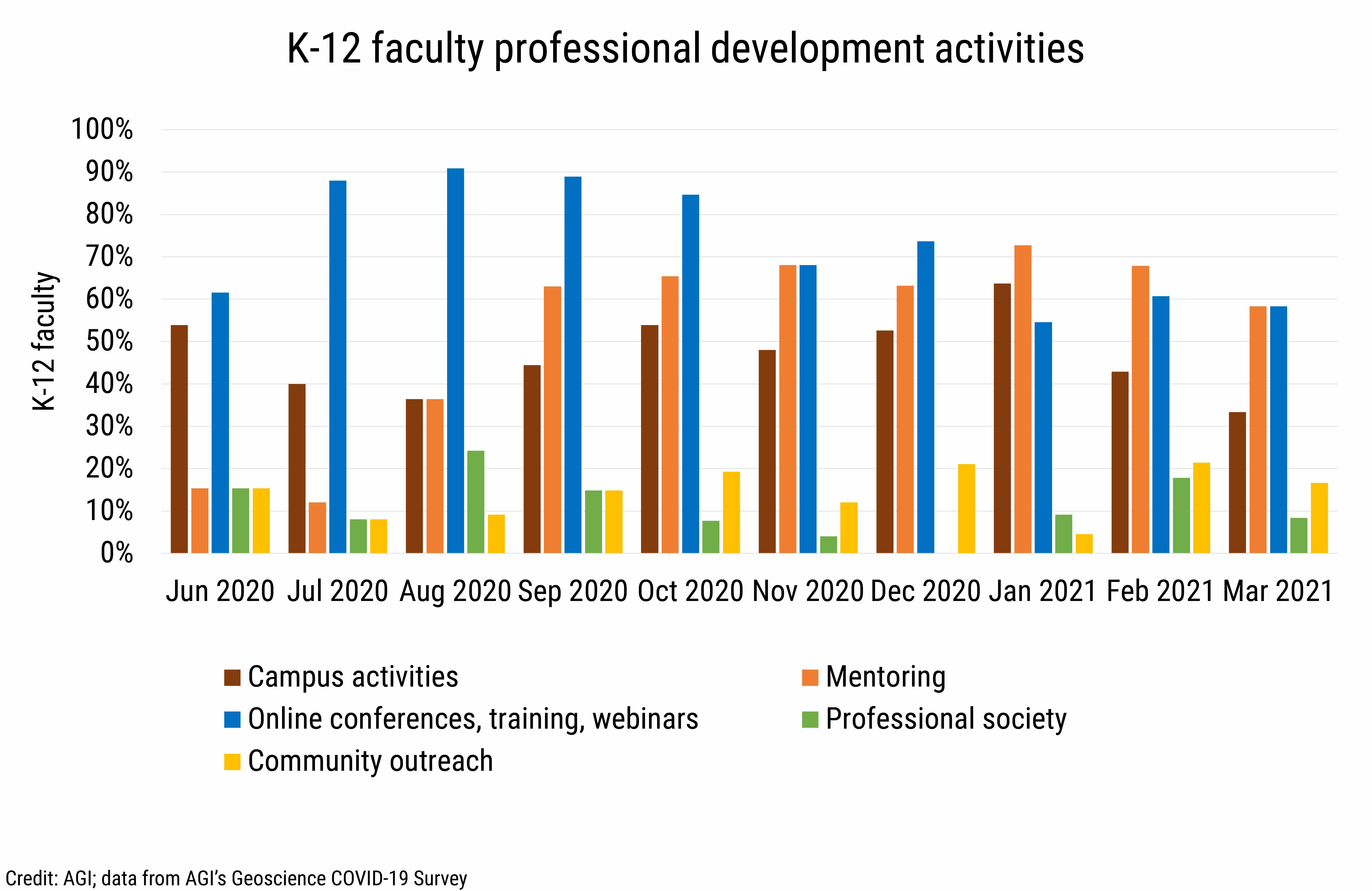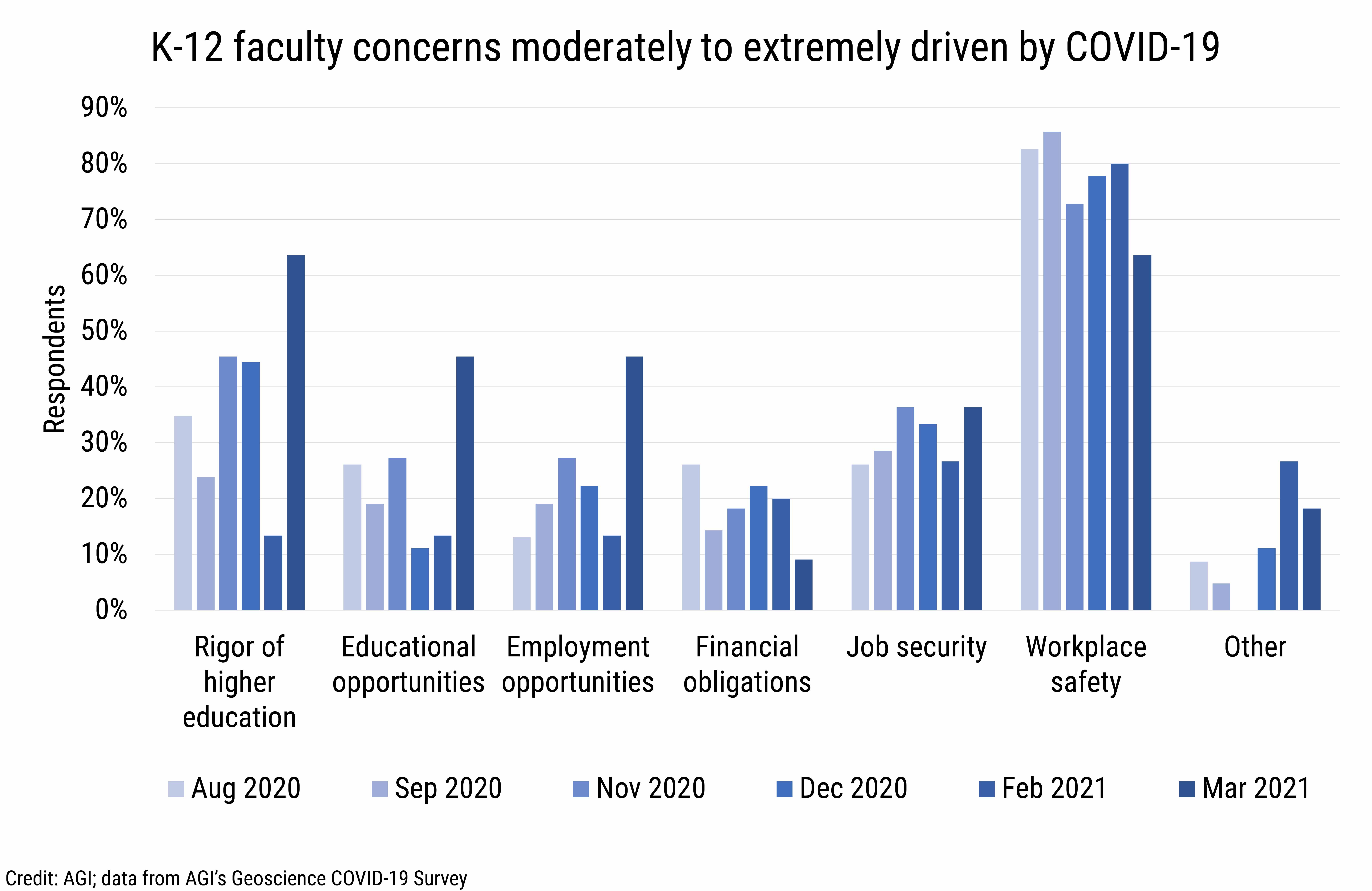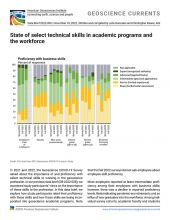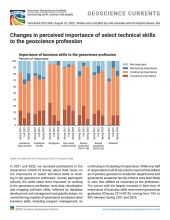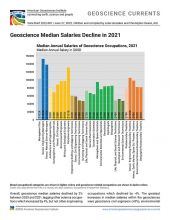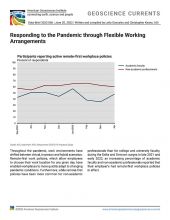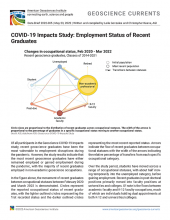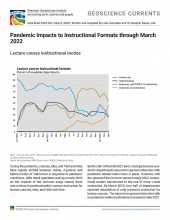This data brief provides insights from the most recent results from the Geoscience COVID-19 study regarding impacts to geoscience K-12 faculty during the pandemic. We examine the change in primary work location of K-12 faculty, work and research activities, engagement with professional development activities, and pandemic-related restrictions for facility access, health and safety protocols, and meetings and travel. We also examine the top concerns of K-12 faculty that have been driven by the pandemic.
Work Location
In February 2020, the primary work location of 94% of K-12 faculty was at their school / office, while 6% of reported that their primary work location was working from home. By May 2020, primary work locations had switched, with 91% of K-12 faculty reporting working from home and 9% reporting working from their employer’s office as their primary work location.
Starting in September 2020, K-12 faculty began to split time between working from home and the office, and in March 2021, the primary work location of K-12 faculty had switched from home to the office. Despite this change in work location, however, 40% of K-12 faculty reported that they did not need to be in the office to perform their work, and 20% reported that it was only slightly necessary for them to be in the office.
Work and Research Activities
Online research continues to be the primary work and research mode for geoscience K-12 faculty. Since September 2020, literature review, writing, and editing have been the second most common mode of work and research. Lab-based activities, reported by one-fifth to one-third of K-12 faculty from July through December, increased through the winter months, peaking at in February 2021. Computational research activities were reported by 20% to 30% of K-12 faculty through Fall 2020 and declined in the winter months. In addition, approximately one-tenth of K-12 faculty reported conducting fieldwork activities from June through October 2020 and in February and March 2021.
Pandemic-related Restrictions
Access restrictions and limited staffing at facilities continue to be the most common COVID-19 related facility restriction reported by K-12 faculty. While access restrictions have begun to ease, an increasing percentage of K-12 faculty have reported reduced staffing at facilities. Furthermore, since June 2020, an increasing percentage of K-12 faculty reported deferral of field activities. Nearly half of K-12 faculty reported deferral of lab-based activities in November 2020, and this percentage has since declined to 28% in March 2021.
The use of face masks inside buildings and social distancing continues to be the most common COVID-19 related health and safety protocols reported by K-12 faculty. Since June 2020, an increasing percentage of respondents have reported COVID-19 related health and safety restrictions related to the use of face mask both indoors and outdoors, use of personal protective equipment, COVID-19 testing, and temperature checks.
Virtual meetings were the most common COVID-19 related meeting and travel restriction reported by K-12 faculty through January 2021, but was surpassed by restrictions prohibiting travel and outside visitors. In March 2021, 61% of K-12 faculty reported restrictions preventing travel, 56% reported restrictions preventing outside visitors, and 56% reported having to only use virtual meetings. The percentage of K-12 faculty reporting isolation policies after travelling remained over 20% for most of July 2020 through March 2021.
Professional Development
K-12 faculty engaged in a variety of professional development activities during the pandemic, with most attending virtual workshops or conferences, webinars, or taking online courses. Approximately half of K-12 faculty reported taking online courses from June through August 2020 and webinars between June and October 2020.
Over half of K-12 faculty also reported mentoring students and colleagues during the 2020-2021 academic year. Engagement in community outreach and professional society activities were the least reported professional development activities reported by K-12 faculty.
Concerns
For K-12 faculty, workplace safety continues to be the top concern moderately to extremely driven by the pandemic although the concern has lessened since September 2020. In March 2021, there was a large increase in the percentage of K-12 faculty reporting concerns related to academic rigor, educational opportunities, and employment opportunities that were moderately to extremely driven by the pandemic.
We will continue to provide current snapshots on the impacts of COVID-19 on the geoscience enterprise throughout the year. For more information, and to participate in the study, please visit: www.americangeosciences.org/workforce/covid19
Funding for this project is provided by the National Science Foundation (Award #2029570). The results and interpretation of the survey are the views of the American Geosciences Institute and not those of the National Science Foundation.


